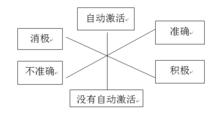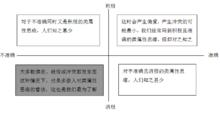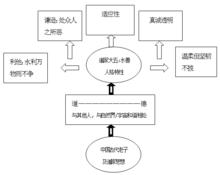教育和培訓背景
1984年,獲湖南長沙鐵道學院(今中南大學)英文系學士
1986年,獲北京師範大學心理系碩士
1991年,獲美國紐約州立大學(石溪校區)社會心理學和人格心理學博士
1992-1993年,在美國賓州大學從事人格、文化、和管理心理學博士後研究
2004-2005年,在哈佛大學高等教育管理學院(MDP)進修並獲得高教管理證書。
工作經歷
1989-1991年,美國紐約州立大學任講師
1991-1994年,費城大學任助理教授
1994-2000年 在麻薩諸塞州西部州立大學任助理教授和副教授
2000至2004年,在美國明尼蘇達州立大學社會心理學和民族心理學教授,同時兼任明尼蘇達州立大學民族心理和全球文化學系主任
2005年-2007年,美國北達科塔州(Minot)州立大學文理綜合學院院長
2007年2015年,美國俄亥俄州托利多(Toledo)大學文理學院院長(2007-2008年),協理副校長(2008-2009年),心理學教授,博導、社會認知與跨文化關係實驗室(Social Cognition and Intercultural Relations Laboratory, SCIR Lab)主任。
2013-2016年,美國心理學會《宗教和靈性心理學》科學刊物特邀編輯。
2015年至今,美國南伊利諾伊大學(Southern Illinois University)研究生院院長,心理學教授,博士生導師 。
研究領域
黎岳庭教授及其團隊主要從事社會心理學研究,研究領域包括類屬思維(Stereotypes)、跨文化與進化心理學(Cross-Cultural and Evolutionary Psychology)、道家大五或水善人格/領導理論(Daoist Big-Five and water-like leadership/personality)等。其類屬性思維的正確性的研究成果曾在美國《科學新聞》(Science News)系統介紹過,同時被美國正統的社會心理學和人格心理學等不同的教科書多次引用。
類屬性思維及其過程
黎岳庭教授及其團隊 提出了類屬思維(Stereotypes)“評價-激活-準確”(EPA)理論模型 。他們認為,類屬性思維是一種客觀存在的心理現象,由評價、激活和準確性共同作用形成動態系統。評價(Evaluation)是人們對被知覺者的類屬性思維所具有褒貶性的判斷。類屬性思維可能是積極的(positive),也可能是消極的(negative)。激活(Potential)是指類屬性思維有可能被人們激活的程度,它可以是知覺中被自動激活的信息(activated),也可以是沒有被自動激活的信息(inactivated)。準確性(Accuracy)是人們對於類屬性思維可能與實際情況相符合情況的判斷,類屬性思維有可能是與實際情況相符合的(accurate),也可能與實際情況不符合的(inaccurate)。在類屬判斷中,E(積極--消極)、P(激活--沒有激活)、A(準確--不準確)這三個維度並不是非此即彼的兩極狀態(即並不是用簡單的“全”或“無”來表示的),它們是在兩極中不斷變化的連續變數,共同構成一個動態的類屬性思維形成系統。下圖是類屬性思維的三維結構模型,它具體描述了類屬性思維的連續性維度。 可以用圖1表示:
 圖1 類屬性思維的EPA 立體模式圖
圖1 類屬性思維的EPA 立體模式圖在類屬思維這三個維度中,評價與準確性是我們關注較多的維度。為了更直觀地描述人們經常遇到的類屬性思維類型,他們還用這兩個維度可將類屬性思維分成四個類別。可以用圖2表示:
 圖2 類屬性思維的評價和正確性兩維圖
圖2 類屬性思維的評價和正確性兩維圖以前類屬性思維的研究通常是該圖的左下角區——即不正確且負面的類屬性思維。社會心理學家深入地理解其它三個區域的社會群體的心理表征也是非常重要的,因為類屬性思維並非總是負面或不正確的,對於其他象限的了解與判斷,有助於我們理解和欣賞人類的差異性,幫助我們更有效地處理一些現實問題 。
類屬性思維產生的進化心理學解釋
薩滿教(shamanism)是世界性的文化現象,其流行區域集中在亞洲北部和中部,乃至歐洲北部、北美、南美和非洲。從世界宗教的起源來看,它們都是來自於薩滿教,而薩滿教則是由圖騰信仰演化而來 。例如,基督教、天主教、伊斯蘭教源於猶太教,而猶太教、儒家、道家、印度教、佛教以及其他許多精神信仰或思想體系都源於薩滿教 。從進化的角度來看,薩滿教與圖騰崇拜有著密切的聯繫。Durkheim的宗教起源論認為,圖騰崇拜是迄今可能發現的最原始和最簡單的宗教。在這之前沒有更原始、更簡單的宗教作為圖騰崇拜的出發點。圖騰是一個群體表明自己的身份歸屬、人格特質乃至其靈魂的視覺徽號或象徵。圖騰多以某種動物的形式出現(甚至是猛獸),也有可能是植物或其它無生命的物體。圖騰信仰主要體現在對圖騰的敬畏,例如禁止對圖騰動物的捕殺與傷害。其實質是人類自身與自然界(如動物、植物或者人類周邊的其他物體)的靈魂或心理上的連結 。圖騰會被指代為自己的血緣關係或者祖先(如中國認為自己是龍的傳人);有時也會代表自己所屬群體的名字。例如,以熊為圖騰的氏族,便以熊作為氏族的名稱;以虎為圖騰的氏族,便叫虎氏族。Morgan (1877/ 1974)描述了在奧吉布瓦族(印第安族之一)語言中,圖騰這個詞的發音是dodaim, 象徵著部落的符號或圖案; 因此狼的圖像就是狼族的圖騰。除了狼族,還有其它族群,如熊,海狸,烏龜,鷂, 鶴,鴨,蛇,鯉魚,鯰魚,梭子魚也是他們的圖騰 。氏族、胞族、部落、民族、家族、家庭或姓氏等以某種有生物或無生物命名,並以它作為識別的標誌。可以說,圖騰產生之後,人類形成了第一個共同的意識-圖騰意識。同時,每一個群體都以圖騰一有生物或無生物一作為群體的名稱。人類群體以圖騰命名,使原始人群第一次有了自己的名稱,成為歷史上第一個完善的社會組織。圖騰也是最古的姓氏以及地名產生的重要途徑,圖騰除了具有識別作用之外,同時又具有區分群體的功能 。
由此可見,圖騰將自然界與人類聯繫起來,具有重要的分類以及區分功能。現代社會的許多標誌也和圖騰一樣,起到與類屬性思維同樣的分類功能。以體育團隊的吉祥物為例,許多運動團隊使用動物作為他們的吉祥物,其作用與圖騰一樣。例如底特律老虎隊,老虎可以看成為一個團結那些支持該隊人的象徵,它已經成為過去以及今天團隊的圖騰符號。因此,圖騰與類屬思維一樣,其基本功能之一是根據一些特質將個體或群體分類 。可以說無論是類屬性思維還是圖騰都是人類分類的結果(亦即社會表征,參照 )。因此,圖騰與類屬性思維緊密相聯,根植於文化或社會現實中,類屬性思維和圖騰作為社會分類的表征,與一個群體共享的信仰緊密相連。從功能上看,類屬性思維和圖騰在團體內部成員之間或團體之間的社會交往中起了很重要的組織作用 。
道家大五—水善人格/領導理論
道家大五—水善人格/領導理論(Daoist Big-Five and water-like leadership/personality)是基於老子道與德的核心概念 (見 ,用水所具有的五個特徵來表示人格及領導的五個不同的特質(例如,利他,謙遜,真誠,適應性以及堅韌性)。這些特性可以用老子的“上善若水”來加以總括。基於黎岳庭與同事的研究,道家大五—水善人格/領導理論的五個成分可以概括如下 :
 圖3 道家大五人格理論模型
圖3 道家大五人格理論模型首先,水是利他的。“水善利萬物而不爭”(道德經,第8章) 。水總是有益於萬事萬物。道家領導者應像水那樣,多考慮他人的利益,盡其所能去幫助他人,而不是首先尋求自身的利益滿足。“夫唯不爭,故無尤” (道德經,第8章) ,由於不爭而利他,領導者才能夠有底氣,說話也才能有份量。其次,水是謙遜的。“處眾人之所惡,故幾於道"(道德經,第8章) 。水總是居於低處,保持謙遜的態度。儘管西方人自始自終表現出剛毅, 好鬥和好競爭, 老子卻鼓勵我們要有保持低調和謙卑並有益於他人的水善人格, 他認為對於一個想要影響他人的領導來說, 謙卑、樂於助人、保持低調都是必要的品質。“江海之所以能為百穀王者, 以其善下之, 故能為百穀王。"(道德經,第66章) 第三,水具有很強的適應性。水可以被裝入到任何的容器之中。一個好的領導者需要像水能夠適應容器那樣調整自己以適應周圍的環境。 第四,水是清澈透明的。作為領導者應該像水那樣清澈坦誠,這表現在很多方面,例如與下屬分享信息,在組織中創建信任和諧的氛圍等等。這些對於組織的發展顯然也是至關重要的。最後,水儘管柔軟,但它也是堅韌而強大的。“天下莫柔弱於水, 而攻堅強者莫之能勝, 以其無以易之。"(道德經,第78章) 作為領導者也應該像水那樣,通過堅持不懈、努力地積累來獲得組織及領導者的成功 。
代表作
著作
Lee, Y. T., McCauley, C. R., & Draguns, J. G. (Eds.). (2013). Personality and person perception across cultures. Psychology Press.
黎岳庭, & 劉力. (2010). 社會認知: 了解自己和他人. 北京:北京師範大學出版社.
Lee, Y-T., McCauley, C., Moghaddam, F., & Worchel, S. (2004). The Psychology of Ethnic and Cultural Conflict. Westport, CT: Praeger Publishers.
Lee, Y-T. (1998). A guide to teaching social psychology across cultures. New York: W. H. Freeman.
Lee, Y-T., McCauley, C. R., & Draguns, J. (Eds.). (1999). Personality and person perception across cultures. Mahwah, NJ: Lawrence Erlbaum Associates, Inc. Publishers.
Lee, Y-T., Jussim, L. & McCauley, C. (Eds.). (1995). Stereotype accuracy: Toward appreciating group differences. Washington, DC: The American Psychological Association.
Lee, Y-T. (1991). Stereotypes, salience and threat: The determinants of perceived in-group homogeneity. Ann Arbor, MI: UMI/A Bell & Howell Information Co.
期刊
Lee, Y-T. (2016). The Dao of harmonious leadership: Daoist Big-Five. Tsinghua Business Review, 10,60-67.
Lee, Y-T., Xu, C, Liu, Y, & Chen, W. (2015). The Chinese Daoist theory of water-like personality: A correlational study of Daoist Big-Five leadership, Machiavellianism, and good human nature. American Review of China Studies, 16(2 ),27-48.
Lee, Y-T,, & Kanazawa, S., K. (2015). An Introduction to the special issue on the nature and evolution of totemism, Shamanism, religions, and spirituality. Psychology of Religion and Spirituality, 7(4), 265-266.
Lee, Y-T., Beddow, M., Chan, S., & Xu, C. (2015). Evolutionary and cross-cultural investigation of totemism, Daoism and other spiritual beliefs. Psychology of Religion and Spirituality, 7(4), 278-285.
Lee, Y. T., Ottati, V. C., Lin, C., & Chan, S. X. (2014). How are Asian Americans Seen and Evaluated? Examining Ethnic Stereotypes and their Cultural Complexity. Cross-Cultural Communication, 10(2), 98-111.
Lee, Y-T., Haught, H, Chen, K. & Chan, X. (2013). Examining Daoist Big-Five Leadership in Cross-Cultural and Gender Perspectives. Asian American Journal of Psychology, 4(4): 267–276
Lee, Y-T., McCauley, C., & Jussim, C. (2013). Stereotypes as valid categories of knowledge, and human perceptions of group differences. Social and Personality Psychology Compass, 7(7), 470-486.
Lee, Y-T., Jussim, L., McCauley, C. (2013).Stereotypes as categories of knowledge: Complexity, validity, usefulness, and essence in perceptions of group differences. Advances in Psychological Sciences, 21(1), 1-21.
Lee, Y-T., Ottati, V., Bornman, E., & Yang, S. (2011). A cross-cultural investigation of beliefs about justice in China, USA and South Africa. International Journal of Intercultural Relations, 35, 511-521.
Lee, Y-T. & Jussim, L. (2010). Back in the real world. American Psychologist, 65(2), 130-131.
Lee, Y-T., Yang, H-G, & Wang, M. (2009). Daoist harmony as a Chinese philosophy and psychology. Peace and Conflict Studies. 16(1), 68-71.
Lee, Y-T., Bumgarner, J., Widner, R., & Luo, Z-L. (2007). Psychological models of stereotyping and profiling in law enforcement: How to increase accuracy by using more non-racial cues . Journal of Crime and Justice, 30 (1), 87-129.
Lee, Y-T., Vue, S. Seklecki, R. & Ma, Y. (2007). How did Asian Americans Respond to Negative Stereotypes and Hate Crimes? American Behavioral Scientist, 51 (2), 271-293.
Lee, Y-T. Quinones-Perdomo, J. & Perdomo, E. (2003). An Integrative Model of Ethnic Contact, Identity and Conflict (CIC): Application to U.S. Immigration and naturalization. Ethnic Studies Review, 26(2), 57-80.
Lee, Y-T. (2003). Daoistic humanism in ancient China: Broadening personality and counseling theories in the 21 century. Journal of Humanistic Psychology, 43(1), 64-85.
Lee, Y-T. & Ottati, V (2002). Attitudes toward American immigration policy: The role of ingroup-outgroup bias, economic concern, and obedience to law. Journal of Social Psychology, 142(5), 617-634.
Lee, Y-T., Ottati, V, Hussain, I. (2001). Attitudes toward to “Illegal” Immigration into the U. S.: California Proposition 187. Hispanic Journal of Behavioral Sciences, 23(4), 430-443.
Lee, Y-T. Albright, L. & Malloy, T. (2001). Social perception and stereotyping: An interpersonal and intercultural approach. International Journal of Group Tension, 30(2), 183-209.
Lee, Y-T. (2000). What is missing in Chinese-Western dialectical reasoning? American Psychologist, 55, 1065-1067.
Lee, Y-T. (2000). Attacking racism from a different perspective. International Journal of Group Tension, 29, 210-212.
Lee, Y-T., Pepitone, A., & Albright, L. (1997). Descriptive and Prescriptive Beliefs about Justice: A Sino-U.S. Comparison. Cross-Cultural Research. 31(2), 101-120.
Lee, Y-T. & Seligman, M. E. P. (1997). Are Americans more optimistic than the Chinese? Personality and Social Psychology Bulletin, 23(1), 32-40.
Lee, Y-T., Kleinbach, R., Hu, P., Peng, Z. Z., & Chen, X. Y. (1996). Cross-cultural research on euthanasia and abortion. The Journal of Social Issues, 52 (2), 131-148.
Lee, Y-T. (1996). From West-centric civilization to an appreciation of global differences. Cross-Cultural Psychology Bulletin, 30(1), 21-32.
Lee, Y-T. (1996). It is difference, not prejudice, that engenders intergroup tension: Revisiting Ichheiserian research. American Psychologist 51(3), 267-268.
Lee, Y-T. (1996). "Fundamental advances" in psychological globalization and revitalization. World Psychology, 1(4), 114-116.
Lee, Y-T. (1995) A comparison of politics and personality in China and in the U. S.: Testing a "kernel of truth" hypothesis. The Journal of Contemporary China, 9, 56-68.
Lee, Y-T. & Ottati, V. (1995). Perceived group homogeneity as a function of group membership salience and stereotype threats. Personality and Social Psychology Bulletin 21(6), 612-621.
Lee, Y-T. (1994). Individualism-collectivism: Avoiding the hammer-nail effect. Cross-Cultural Psychology Bulletin, 28, 15-17.
Lee, Y-T. (1994). Stereotypes, ingroup homogeneity and social identity theory in intergroup contact and comparison. Sociological Theory (Teoria Sociologica), 3, 162-175 (also translated into Italian).
Lee, Y-T. (1994). Why does psychology have cultural limitations? American Psychologist, 49, 524-525.
Lee, Y-T. (1994). Racial conflict in academic communities: An analysis of various forms of racism and prejudice. IMPART: Journal of Open Mind, 2, 78-86.
Lee, Y-T. (1993). Cultural sensitivity and psychological open-mindedness: Understanding ourselves in the global village. Contemporary Psychology, 38, 794-795
Lee, Y-T. (1993). Perceived homogeneity and familial loyalty between mainland Chinese and Americans. Current Psychology, 12, 260-267.
Lee, Y-T. (1993). Reactions of American minority and nonminority students to the Persian Gulf war. The Journal of Social Psychology, 133, 707-713.
Lee, Y-T. (1993). Psychology needs no prejudice but the diversity of cultures. American Psychologist, 48, 1090-1091.
Lee, Y-T. (1993). Ingroup preference and homogeneity among African American and Chinese American Students. The Journal of Social Psychology, 133(2), 225-235.
Lee, Y-T., & Ottati, V., (1993). Determinants of ingroup and outgroup perception of heterogeneity: An investigation of Chinese-American stereotypes. Journal of Cross-Cultural Psychology, 24, 298-318.
黎岳庭. (2012). 類屬性思維與東西方文化異同. 戰略決策研究 , 03(1), 38-44.
黎岳庭, 王旻. (2010). 中國古代道家人本主義思想——豐富和發展21世紀的人格和諮詢心理學理論. 心理學探新 , 30(5), 3-10.
羅震雷, 張厚粲, 黎岳庭. (2005). 從刻板印象到類屬性思維. 心理科學 , 28(3), 636-638.

